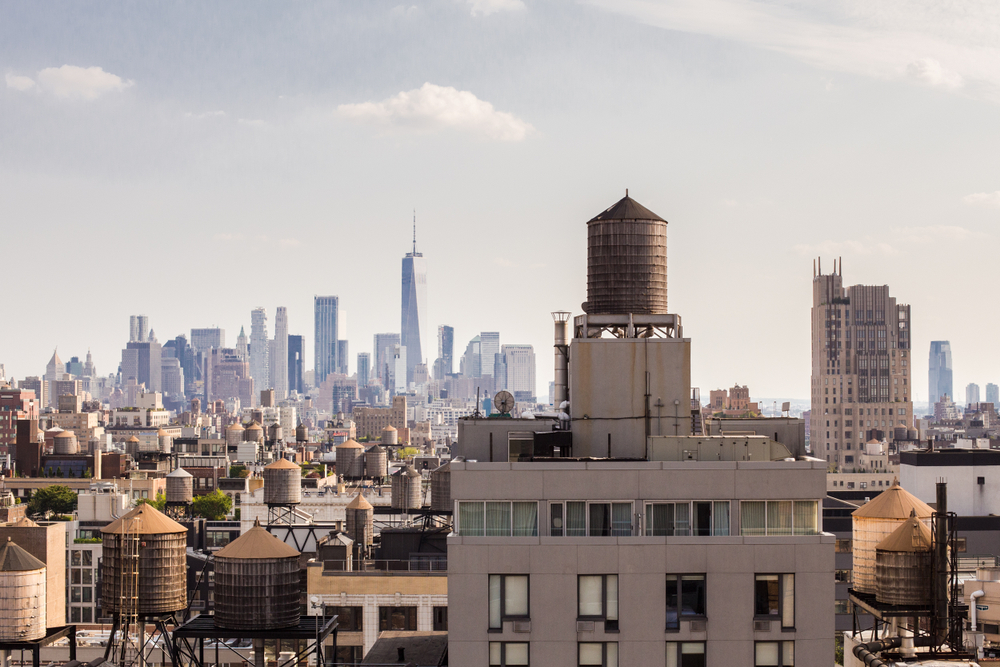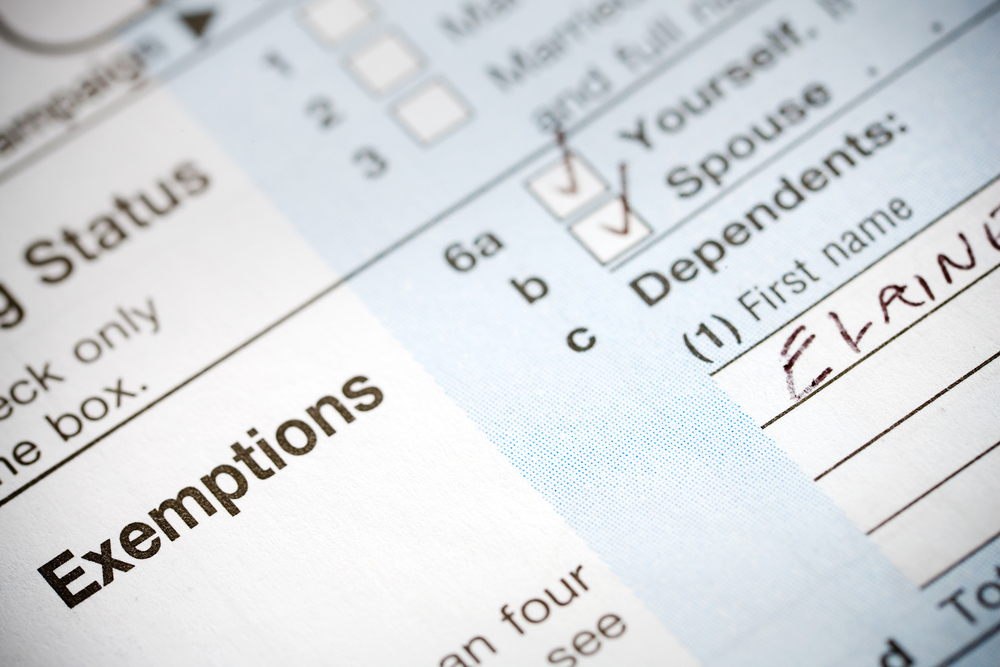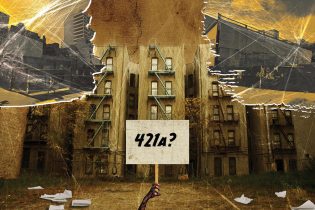What Is a 421a Tax Exemption?

If there is one tax break that everyone in New York City should know, it is 421a tax exemption. This longstanding tax break has cost the city billions in revenue. Depending on whom you ask, 421a has either driven new property development and created much needed housing, or it has unfairly benefited already wealthy developers.

This year, Albany allowed 421a to lapse, not renewing it for another period. However, this is far from the end of the debate over major property tax breaks. What is the future of 421a going forward? And what should developers, renters, and buyers know about how tax breaks in NYC impact their properties and the city as a whole?
On this page, we will walk you through the 421a tax break: its history, its impact, and what the real estate landscape looks like now that it has expired. But first, you need to understand what exactly the 421a tax exemption was, and how its benefits applied to developments in NYC for the past 50 years.
Table of Contents
Understanding the 421a Tax Exemption
According to the New York State Department of Finance, the 421a tax exemption is a type of property tax benefit that applies to some real estate owners in the five boroughs. The amount of benefits developers receive depends on a host of factors, including the location of the property, its use, and the amount of affordable housing it contains.
This iteration of the 421a tax exemption is not the first. The tax break has been tweaked and edited over the many years it has been in place. Understanding the history of affordable housing tax breaks in NYC is important to understanding the latest version of the 421a tax exemption–and why the New York State government chose to let it expire this year.
The History of the 421a Tax Exemption

Established in 1971 in an effort to increase the amount of affordable housing in NYC, the 421a tax exemption is one of the most popular property tax benefits for developers in the city. Most major, multi-family housing developments make use of this tax break, greatly reducing their tax bill, often by millions of dollars.
Proponents of the exemption say that it has encouraged the development of many major multi-family housing projects during the past 50 years. Some even say that there would be little incentive to build without the 421a tax exemption due to economic conditions in the real estate market. Others think the hefty exemption–which can totally wipe out the property tax bill on certain properties–is not worth the amount it costs the city: $1.77 billion, according to reporting in the New York Times.
Pushback to the 421a Tax Exemption
Because of the debate surrounding the exemption, there have been pushes not to renew the 421a tax exemption. This past summer, the legislature in Albany allowed the exemption to officially expire.
However, the pushback against 421a is nothing new. For decades now, opponents of the law have claimed that the tax break has been too much of a give-away to developers, according to the New York Times. In particular, they claim that the “affordable housing” that developers must include in order to qualify for the 421a exemption is anything but affordable for most new yorkers.
Many of the affordable units are still priced for New York families making thousands of dollars a year more than the median income. Under 421a, buildings could charge 130 percent of the median income for the neighborhood and still call that an affordable unit. Lower priced units, many of which are studios or one bedrooms ill-suited for families, are harder to come by. The city Comptroller estimates that about 60 percent of “affordable” units built under 2017’s version of 421a were for families making upwards of $100,000 a year. The city’s median household income is $67,046, according to the latest census data.
421a’s Lingering Effects on the NYC Real Estate Market

In the wake of 421a’s expiration, politicians and lobbyists are battling it out over the future of New York real estate taxes. Governor Kathy Hochul and Mayor Eric Adams want to see a revamped version of 421a instated, while other New York City politicians want to see 421a die for good.
According to the website for NYC Comptroller Brad Lander, Hochul’s proposal is called 485w. While it would largely look similar to 421a, 485w would offer longer lasting and lower priced affordable units. On the other hand, the city Comptroller wants to see a more fundamental change to the city’s tax system–particularly in the different way condominium buildings and rental properties are treated.
No matter which side prevails, the New York City property tax code is sure to change in the coming months and years. A successor to 421a is likely needed in order to incentivize building in a city with a documented housing crisis; what form this incentive takes, only time will tell. Here at NewDevRev, we will keep you informed of any updates on changes to the tax code going forward.
Qualifying for a 421a Tax Exemption

Despite its precarious future, the 421a tax exemption is still available to some developers. Developers who have already qualified for the tax break will continue to benefit from it in the coming years, and some developers currently building projects may also be able to apply.
421a (16) Affordable Housing New York Requirements
If a developer began a project between January 1, 2016 and June 15, 2022, then they can apply for the 421a (16) Affordable Housing New York tax exemption. This is the latest iteration of 421a. All eligible properties must be completed by June 15, 2026, and they must be new constructions of multiple dwellings.
In order to qualify for this tax benefit, developers have to meet the above criteria, as well as the requirements of one of the following “options.” There are three optional paths developers can go down in order to qualify:
- Option A: 25% of the units must be affordable. Of these units, at least 10% are to be offered at up to 40% of AMI (adjusted median income), 10% at up to 60% of AMI, and 5% at up to 130% of AMI. Additionally, the development project cannot receive any other tax breaks.
- Option B: 30% of the units must be affordable. At least 10% of these units are to be offered at up to 70% of AMI. 20% are to be offered at up to 130% of AMI.
- Option C: At least 30% of the units must be affordable, and can be offered at up to 130% of AMI.
Additionally, the development cannot receive any government subsidies and cannot be located south of 96th Street. In addition to these affordability requirements, developers with projects of more than 300 units that are located in one of the enhanced affordability areas or that pay their construction workers the hourly minimum wage can receive even greater benefits.
Apply Through HPD
The New York Department of Housing Preservation and Development determines who gets the 421a tax break after reviewing an application, which can be filled out here. Since 421a expired on June 15, 2022, only projects that began construction before that date are able to apply.
Benefits of a 421a Tax Exemption

Length of 421a Benefits
The duration of developers post-construction 421a tax exemption can vary from 10 to 25 years. Additionally, 421a allowed for a construction period exemption for up to 3 years.
No matter the duration of the exemption, it has two phases. During the first phase, developers will have a full exemption. Afterwards, the exemption will enter a phase out period where the benefits decrease until the end of the exemption term.
The most common length of the abatements is either 15 year or 25 year terms. However, under 421a (16) Affordable Housing New York, it is possible to gain benefits for up to 35 years post construction.
Amount Developers Save Under 421a
Longer duration abatements mean more savings for developers. For many developers, the 421a exemption made it so that they had to pay little to no property taxes on their developments as long as they complied with the state’s requirements.

Other Property Tax Benefits in New York
421a, while the largest tax break for developers, is not the only one. Here are some other important tax credits and incentives of which developers should be aware.

420c Tax Incentive
The 420c tax incentive is available for low income housing developments that are at least 50 percent owned by a 501(c)(3) or (4) charitable organization. If the development was previously or is currently funded through federal low income tax credits, then it may also be eligible for this New York tax incentive.
Low Income Housing Tax Credits
The Low Income Housing Tax Credits (LIHTC) are HPD allotted credits that can be applied to the tax bills of developers who set aside at least 20 percent of their units for low income households. Unlike 421a, this is not an exemption, and will not reduce the developer’s taxable income. Instead, it goes towards paying the developer’s tax liability.
- Categories:




